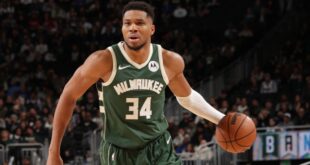The more captivating confrontation in this NBA Finals undoubtedly revolves around the Indiana Pacers’ side, where the league’s top-ranked defense attempts to halt an offense that excels in ball movement and player interaction unlike any other.
However, the offensive performances from the Oklahoma City Thunder hold equal significance to those of the Pacers. Consequently, the player who will face the most scrutiny on the offensive end in the coming two weeks is Kia MVP Shai Gilgeous-Alexander.
Below, you’ll find insights, statistics, and film analysis pertaining to the Thunder’s offense and the Pacers’ strategies to counter it.
The foundation of the Thunder’s offense lies in their capacity to convert steals into fast-break opportunities. Oklahoma City’s average of 10.6 steals per 100 possessions during the playoffs ranks as the highest for any team that advanced past the first round in the last 26 years.
Following these steals, the Thunder have accumulated 235 points over 172 possessions, reflecting an impressive scoring rate of 136.6 points per 100 possessions. For the Pacers, maintaining control of the ball is the top priority.
Failing to do so means trying to contend with a group of long, athletic players charging down the court.
Similar to the Pacers, the Thunder capitalize on more than just live-ball turnovers. They boast an average of merely 13.9 seconds per possession, which is significantly shorter than any other team in the playoffs, according to Second Spectrum tracking.
The Pacers have excelled in transition defense throughout the first three rounds, allowing a postseason low of just 0.96 points per transition possession, as reported by Synergy.
While Gilgeous-Alexander doesn’t hold the ball as often as New York Knicks’ Jalen Brunson, and the Thunder utilize fewer ball screens for him (47.1 per 100 possessions) compared to the Knicks’ usage of Brunson (52.8 per 100), attacking Oklahoma City’s half-court offense begins with containing the MVP. He has consistently led the league in drives per game for the past five seasons.
In fact, Gilgeous-Alexander registered 19.1 isolations per 100 possessions during the regular season, the highest for any player in the last five years. However, the Pacers won’t easily surrender a switch, allowing him to exploit mismatches against Tyrese Haliburton or Myles Turner. Indiana has switched only 12% of ball screens, the lowest percentage in the playoffs, according to Second Spectrum.
Primarily implementing drop coverage, Turner prioritizes rim protection, which creates a couple of challenges:
1. It increases the pressure on Gilgeous-Alexander’s defender to navigate around those screens while remaining tightly attached to the MVP.
2. It results in Gilgeous-Alexander taking pull-up shots—he leads the playoffs with a whopping 66 pull-up 2-pointers (averaging 4.1 per game) at a 48% shooting rate.
Just as you think he may pull up, Gilgeous-Alexander can effortlessly break free from a defender.
Additionally, the Pacers must contain the MVP without committing fouls. He has been averaging 7.9 points from the foul line during the playoffs, and the Pacers rank 15th among 16 playoff teams in opponent free-throw rate (32.6 attempts per 100 field goal attempts). Aaron Nesmith’s average of 4.9 fouls per 36 minutes is the highest among 95 players who have logged at least 150 playoff minutes.
One reason for Nesmith’s propensity to rack up fouls is his diligent work in navigating screens. He effectively defended Brunson in the first five games of the Eastern Conference Finals.
However, with Nesmith battling an ankle injury, Andrew Nembhard stepped in during Game 6 when Brunson shot 8-for-18 and turned the ball over five times.
Nembhard was Gilgeous-Alexander’s main defender during the regular season. Yet, Nesmith only played 22 minutes against the Thunder, missing the December 26 matchup where the MVP scored 45 points on 15-for-22 shooting. Tracking data indicates that Gilgeous-Alexander shot 11-for-18 against Nembhard in the two games they faced each other.
While Nembhard is an excellent defender, he stands two inches shorter and weighs 25 pounds less than Nesmith. Therefore, Gilgeous-Alexander is likely to have a different experience matched up against the smaller defender.
A pivotal moment in that December 26 game occurred when Gilgeous-Alexander posted up Nembhard and easily knocked down a mid-range jumper over him.
Certainly, if the Thunder deploy their standard starting lineup—featuring Gilgeous-Alexander, Lu Dort, Jalen Williams, Chet Holmgren, and Isaiah Hartenstein—placing Nesmith on Gilgeous-Alexander would create challenges for the Pacers in other areas.
If Nembhard is too diminutive to defend against the MVP, he would likewise struggle against Williams. Haliburton must handle the assignment against Dort, and Pascal Siakam will likely need to check Holmgren. When the Thunder opt for a smaller lineup, with either Holmgren or Hartenstein on the bench, the Pacers could more comfortably assign Nesmith to Gilgeous-Alexander. However, a lineup featuring Holmgren at center would complicate Turner’s ability to provide rim protection.
Oklahoma City has demonstrated superior offensive performance, particularly when only one of their two big men is deployed (plus-16.5 points per 100 possessions in 453 total minutes), compared to their performance with both (plus-4.2/100 in 201 minutes). It’s conceivable that Hartenstein might not be as effective defensively against the Pacers’ fluid ball and player movement as he was against teams like Memphis, Denver, and Minnesota.
While the matchup between the Pacers’ offense and the Thunder’s defense presents the most enticing narrative in this series, the strategic duel could very well commence with the matchups on the opposite end of the court.
* * *
John Schuhmann serves as a senior stats analyst for NBA.com. You can reach out to him via email here, view his archive here, and follow him on X.
The opinions expressed on this page do not necessarily reflect those of the NBA, its teams, or Warner Bros. Discovery.
 NBA News NBA News, Match Reports and Updates
NBA News NBA News, Match Reports and Updates



